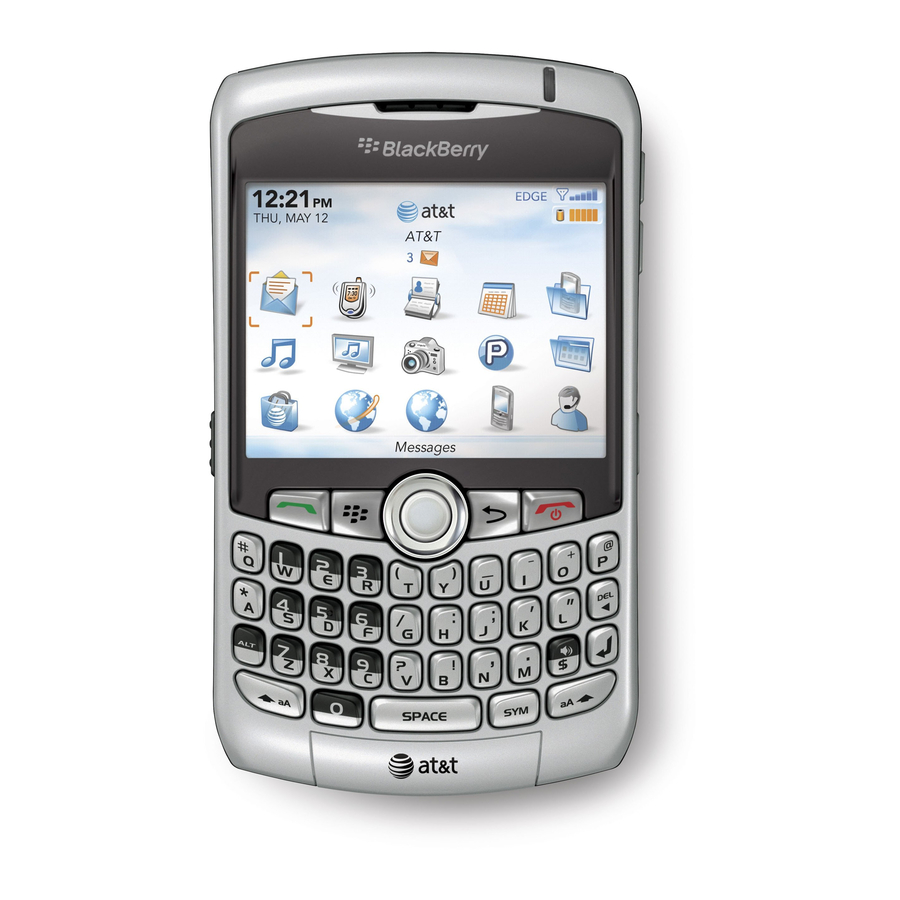Blackberry 8320 - Curve - GSM Informations sur le produit - Page 11
Parcourez en ligne ou téléchargez le pdf Informations sur le produit pour {nom_de_la_catégorie} Blackberry 8320 - Curve - GSM. Blackberry 8320 - Curve - GSM 33 pages. Blackberry curve 8320: quick start
Également pour Blackberry 8320 - Curve - GSM : Informations sur la sécurité et les produits (34 pages), Manuel de démarrage (50 pages), Conseils (4 pages), Manuel de démarrage (46 pages)

Health care facilities: Turn off all wireless connections on the BlackBerry device in health care
facilities when any regulations posted in these areas instruct you to do so. Hospitals or health
care facilities may be using equipment that could be sensitive to external RF energy.
Aircraft: Federal Aviation Administration (FAA) and Federal Communications Commission
(FCC) regulations prohibit using the radio of wireless devices while in the air. Turn off all wireless
connections on the BlackBerry device before boarding an aircraft. The effect of using the
BlackBerry device with wireless connections turned on in an aircraft is unknown. Such use might
affect aircraft instrumentation, communication, and performance, might disrupt the network,
might otherwise be dangerous to the operation of the aircraft, and might be illegal. With all
wireless connections on the BlackBerry device turned off, use only non-radio based device
applications in accordance with airline regulations for electronic devices.
Dangerous areas
The BlackBerry device is not an intrinsically safe device and is not suitable for use in hazardous
environments, where such devices are required, including without limitation, in presence of gas
fumes, explosive dust situations, operation of nuclear facilities, aircraft navigation or
communication services, air traffic control, and life support or weapons systems.
Potentially explosive atmospheres: Turn off all wireless connections on the BlackBerry device
when in any area with a potentially explosive atmosphere, and obey all signs and instructions.
Sparks in such areas could cause an explosion or fire resulting in bodily injury or even death.
Areas with a potentially explosive atmosphere are often, but not always, clearly marked. They
include fueling areas such as gasoline or petrol stations; below deck on boats; fuel or chemical
transfer or storage facilities; vehicles using liquefied petroleum gas (such as propane or butane);
areas where the air contains chemicals or particles, such as grain, dust, or metal powders; and
any other area where you would normally be advised to turn off your vehicle engine.
9
